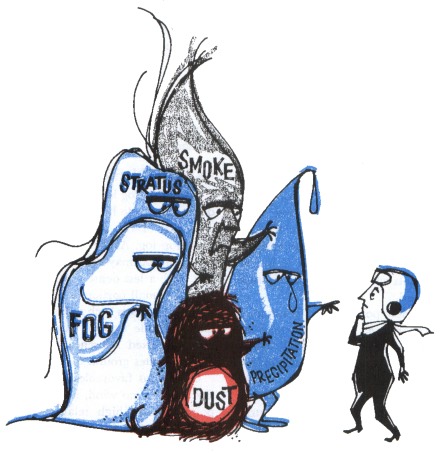Aviation Weather
full text of the classic FAA guide

Chapter 12
COMMON IFR PRODUCERS
Most aircraft accidents related to low ceilings and visibilities involve pilots who are not instrument qualified. These pilots attempt flight by visual reference into weather that is suitable at best only for instrument flight. When you lose sight of the visual horizon, your senses deceive you; you lose sense of direction—you can't tell up from down. You may doubt that you will lose your sense of direction, but one good scare has changed the thinking of many a pilot. “Continued VFR into adverse weather” is the cause of about 25 percent of all fatal general aviation accidents.
Minimum values of ceiling and visibility determine Visual Flight Rules. Lower ceiling and/or visibility require instrument flight. Ceiling is the maximum height from which a pilot can maintain VFR in reference to the ground. Visibility is how far he can see. AVIATION WEATHER SERVICES (AC 00-45) contains details of ceiling and visibility reports.
Don't let yourself be caught in the statistics of “continued VFR into adverse weather.” IFR producers are fog, low clouds, haze, smoke, blowing obstructions to vision, and precipitation. Fog and low stratus restrict navigation by visual reference more often than all other weather parameters.
Table of Contents
Previous Section: Do's and Don'ts of Thunderstorm Flying
Next Section: Fog
A PDF version of this book is available here. You may be able to buy a printed copy of the book from amazon.com.
